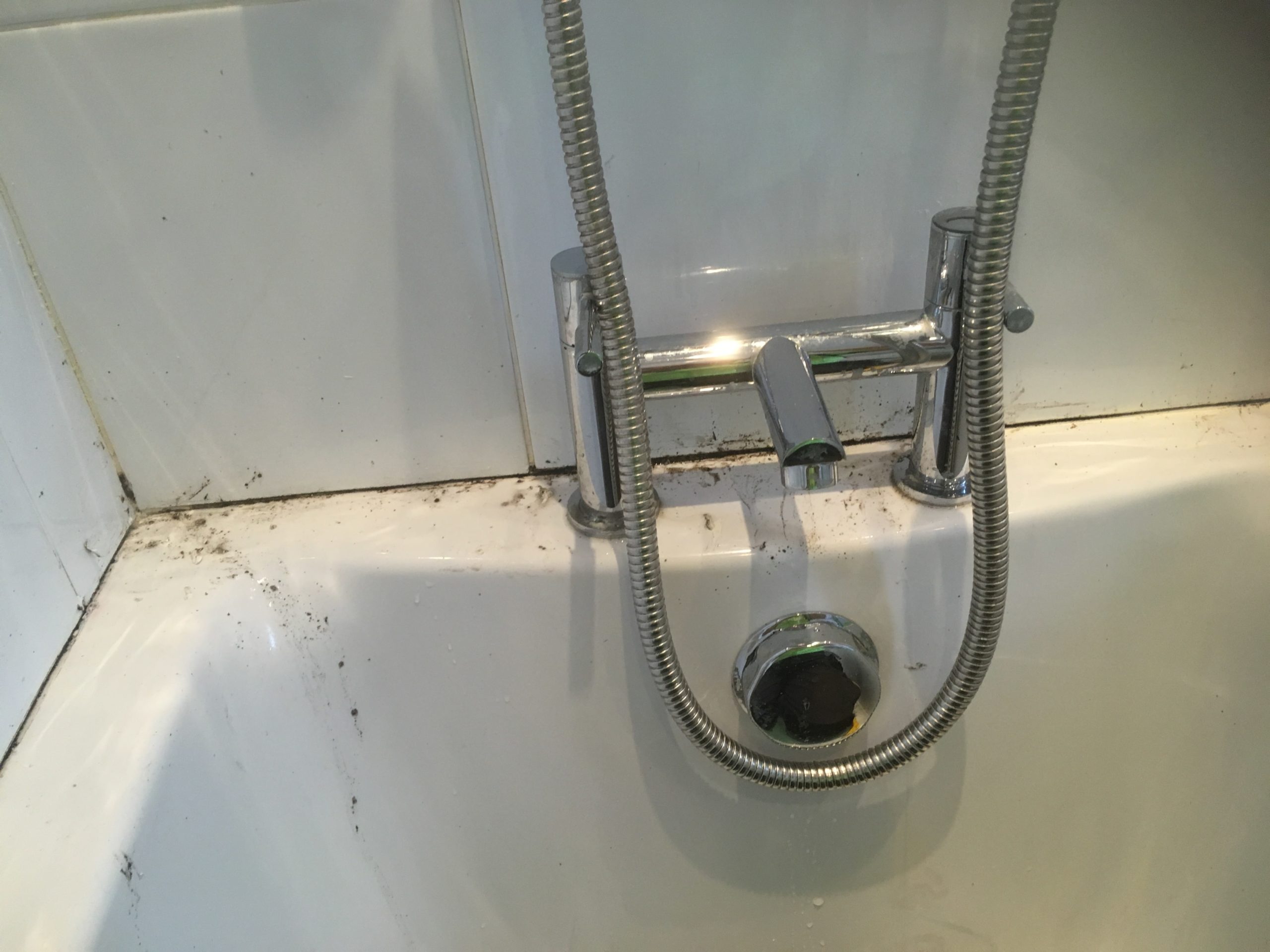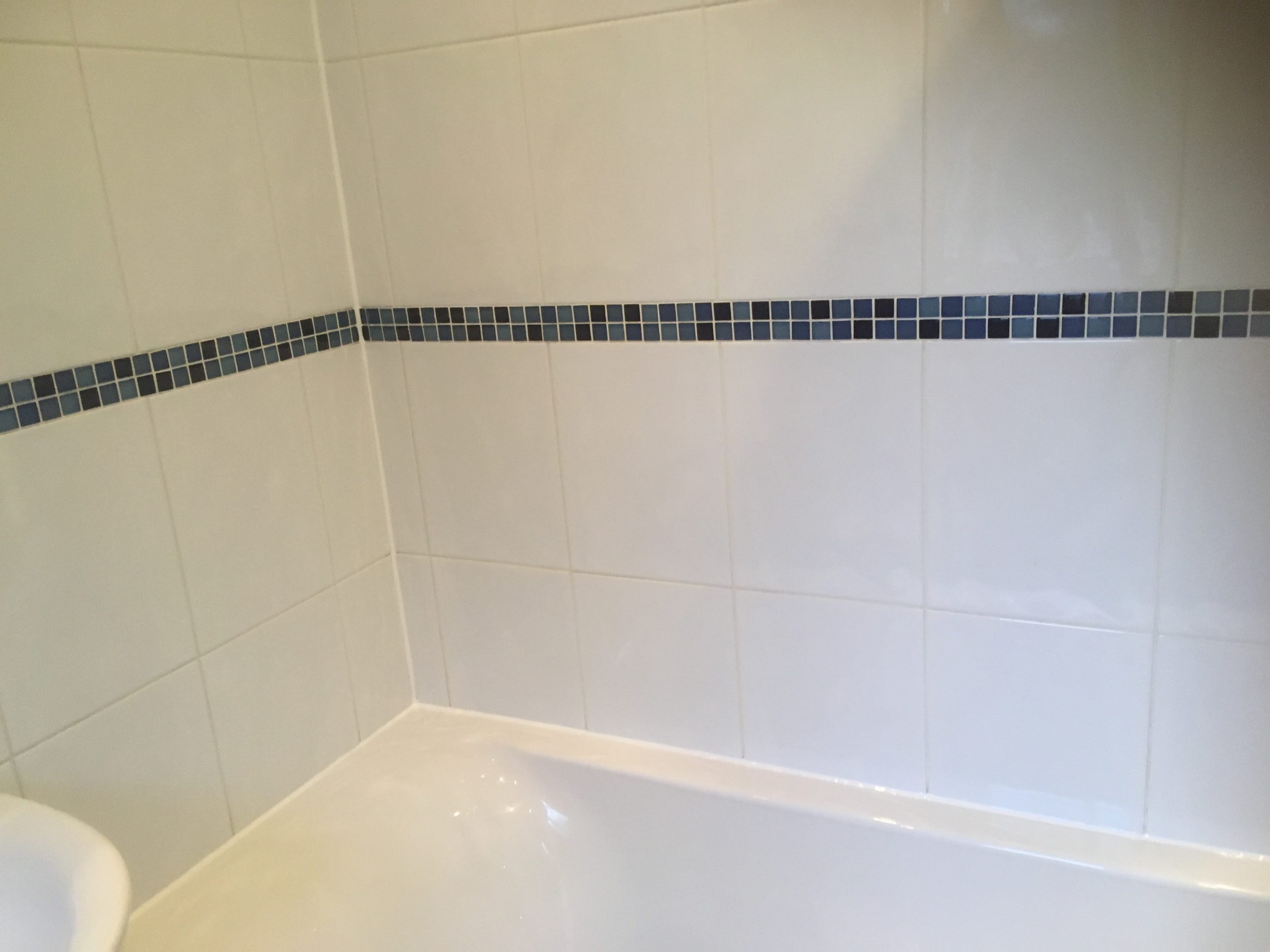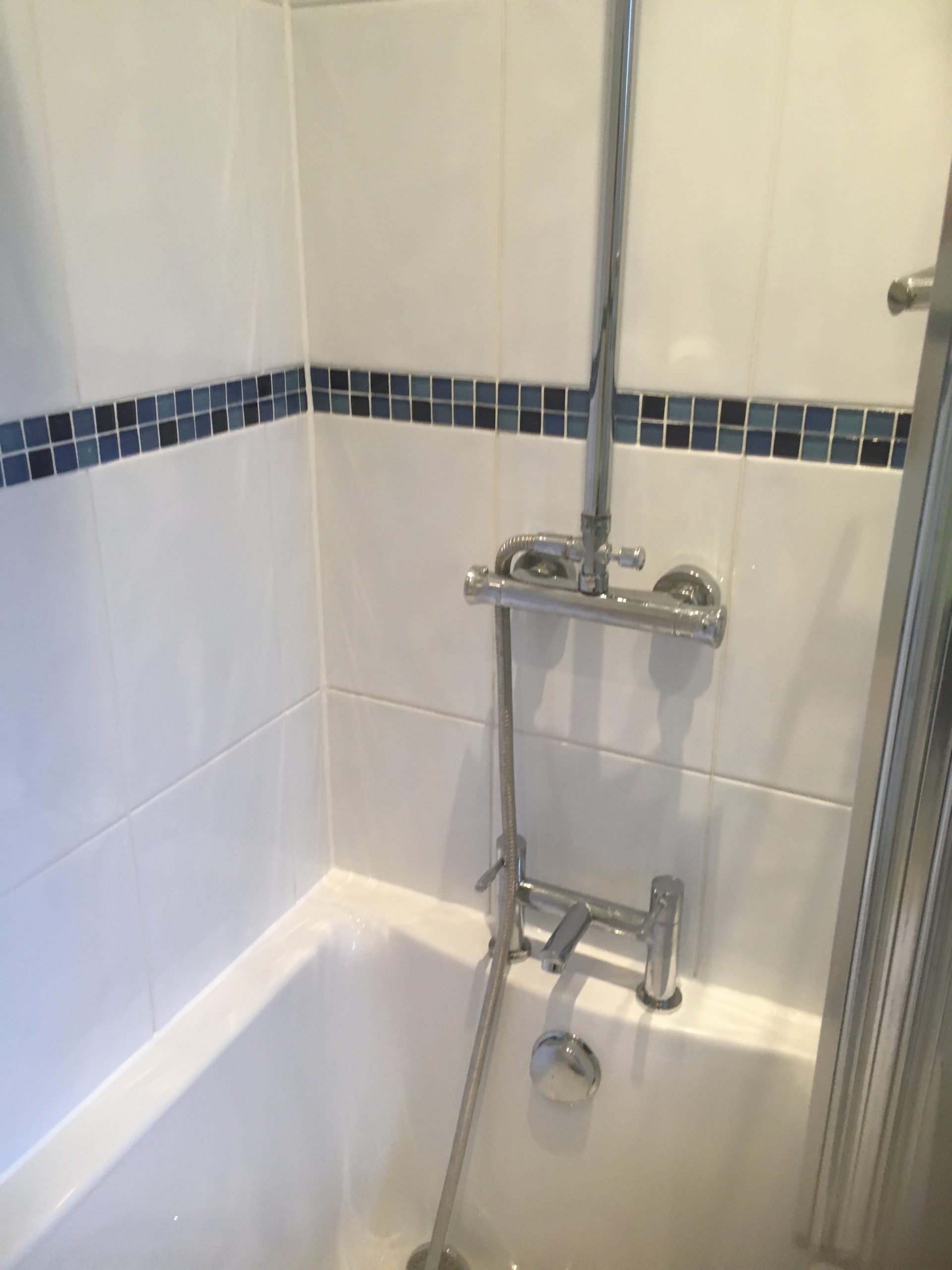The pictured Ceramic tiled bath with a shower over was installed eight years prior at a house in the Cheshire town of Handforth. They had cleaned it regularly, but the client was not able to remove all the stains from the grout along with the soap scum which was present on both the tiles and the bath.

Despite their best efforts with all varieties of household cleaner, the bathroom looked dirty and uninviting, the grout was getting discoloured in some places and there was lots of soap residue and limescale on the bathtub and taps.
I visited site and discussed with them the process, I was very confident that we could get the bathroom clean again without too much trouble and within one day. They were happy to go ahead with my quote and we arranged a mutually convenient time to return.
Cleaning a Ceramic Tiled Bathroom Shower
To get the tiles clean I used a combination of Tile Doctor Duo Clean on the grout and then a strong dilution of Tile Doctor Remove and Go on the soap scum, this product also draws out ingrained stains and removes heavy grease build-up. With some help from a professional steamer that had a grout attachment I was able to give the area a very deep clean
The soap scum was particularly difficult to remove but the combination of Tile Doctor Remove and Go, the steamer and lots of elbow grease we got the job done.

Sealing a Ceramic Tiled Bathroom Shower Floor
Although Ceramic tiles are factory sealed, after cleaning I dried the tile and grout with a heat gun and then sealed with Tile Doctor Wall Tile Aerosol Sealer. This would ensure the grout was sealed and it also ensures that water runs straight off the tile.
The last step was to strip out the old silicone sealant that ran around between the bathtub and the tiles and replace with new in white.

The work was completed in less than a day and the customer was very happy with their revamped bathroom. It now looked a lot more inviting and more like it had when it was installed. I also suggested they should use Tile Doctor Aqua Pro to maintain the tile and grout going forward, its designed for cleaning bathroom tile and will help prevent the build-up much more effectively than the household cleaners they had been using previously. It also has a fresh lemon scent which leaves the room smelling clean and fresh.

Source: Bathroom Tile Cleaning and Renovation Service in East Cheshire